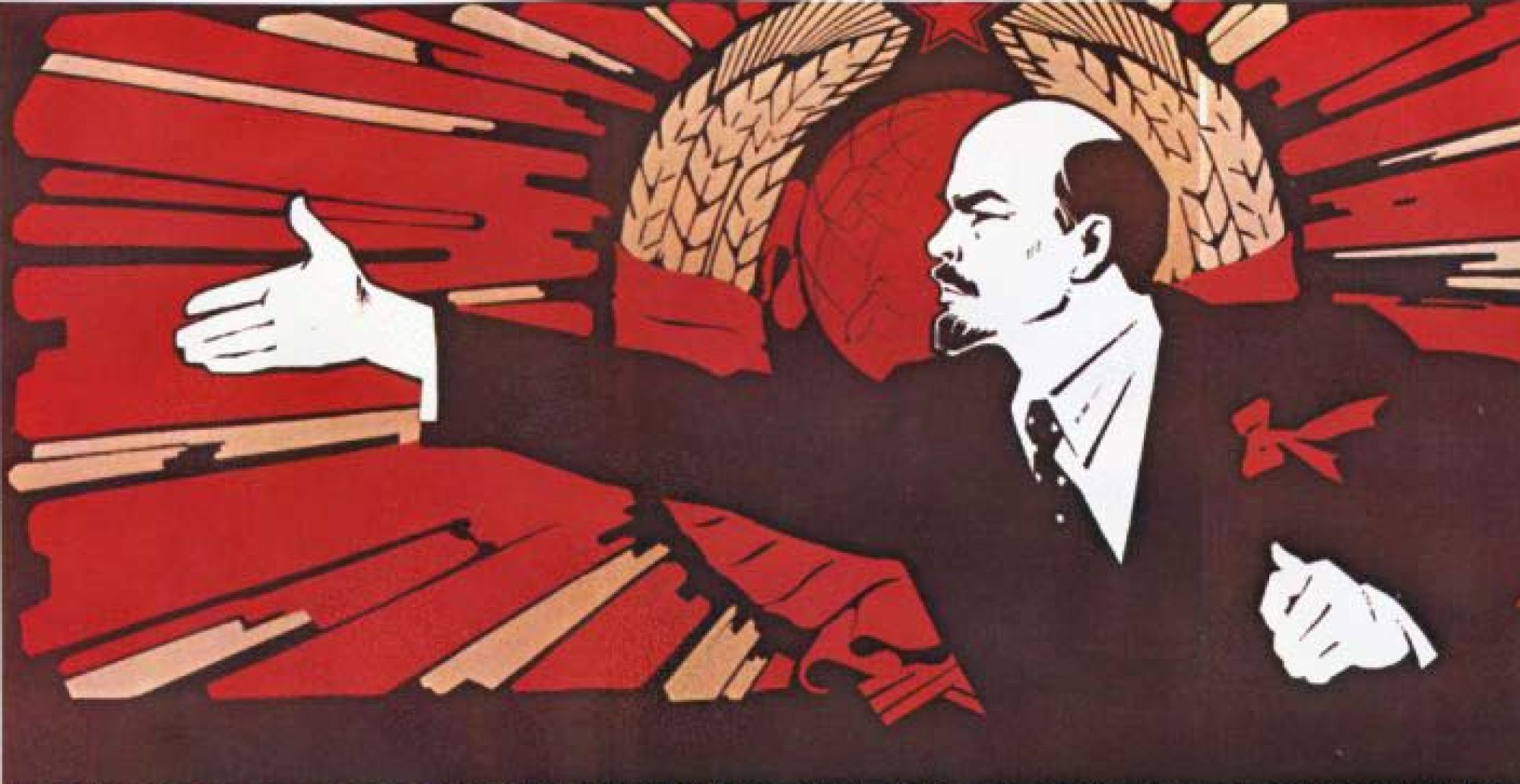‘On the inadequacies of party work’ paints a terrifying picture of the Soviet Union; the Trotskyists are spying on the Soviet Union, they have infiltrated all levels of society, and the party has done nothing to stop them. At a glance, these claims are frightening and would elicit fear from any reader, but a closer read reveals that Stalin’s claims simply work to support his personal agenda. Specifically, Stalin carefully constructs a fearful environment in which secret spies and murderers are lurking around every corner– plotting the downfall of the Soviet Union. Stalin does a great job of diverting any blame of fault away from himself and unto the Party, jealous capitalists, and foes–Germany & Japan. It is not by chance that Stalin is a skilled rhetorician, the cult of personality slide show emphasizes Stalin’s narcissism (a term I use based on the official criterion for NPD and acknowledgement that I’m not a psychiatrist). In many of the photos, Stalin is seen standing (blog slideshow #s 1 ,2 ,3 ,5 ,6 ,7, 8 ,9,11,13,14,15,16,18) and towering over those he is seen with while, according to ABC News, Stalin only stood 5’5. Aside from appearing physically large and assertive, Stalin’s face appears welcoming and even seems to smile (blog slideshow #s 15, 17). How does Stalin alter his persona to elicit his desired response from those around him (Party, citizens, etc.)? Can you have a powerful leader without traits of narcissism (again, using this term with caution)? Stalin has used many tactics during his rule, the main weapons being fear and admiration, how successful are these and where have you seen these manifest? Link for NPD criterion referenced, Kernberg, Otto F. “Pathological Narcissism and Narcissistic Personality Disorder: Theoretical Background and Diagnostic Classification.” In Aggressivity, Narcissism, and Self-Destructiveness in the Psychotherapeutic Rela: New Developments in the Psychopathology and Psychotherapy of Severe Personality Disorders, 45-59. New Haven; London: Yale University Press, 2004. Accessed February 25, 2020. www.jstor.org/stable/j.ctt1npb07.6. Link for ABC referenced, Watt, Nick, and Jenna Mucha. “World’s Leaders Don’t Stand So Tall.” ABC News. ABC News Network, July 23, 2008. Accessed February 25, 2020. https://abcnews.go.com/Politics/story?id=5314996&page=1.

Russia, the Soviet Union, and the CIS (HIS240 S20)
Revolution and its evolution!
There is a lot to be said on the topic of narcissism and global leaders. It’s also important to look at narcissism in the NPD criterion because our colloquial understanding of narcissism. If we look at narcissism through the lens of our culture the answer would be yes. Our loose definition of narcissism would basically include every leader of any organization or political group ever. We consider a narcissist to be anyone with an inflated ego. Not every powerful leader has to have narcissistic attributes; however, it helps. Certain aspects of narcissistic personality disorder would make a leader more blind to criticism. This would essentially make a more powerful leader because the leader would not be offended if the public was not in favor of his actions. Additionally, someone with NPD will have a grandiose sense of their own ability/aptitude. This would make a leader who would be more likely to make bold decisions because they believe that they are competent. Traits like these that are hallmark of NPD. There have been several successful leaders who did not behave in this way. Leaders such as Gandhi were the antithesis of NPD. But our most iconic leaders of history, Mao Zedong, Stalin, Hitler, etc, have always been even just the tiniest bit narcissistic. It’s not a necessary component of leadership. But it sure helps.
I do think it is possible to have a powerful leader without traits of narcism. Though in this case, narcissism is helping Stalin, it does have its faults. Stalin is unable to see faults in his own ideas and strategies and does not have any other sort of perspective. You cannot disregard though there has to be some form of confidence in oneself but not to the extent of complete narcissism.
As aforementioned, Stalin alters his persona to gain the admiration of those around him within the Soviet Union. He does this by presenting himself to be a man of the people. In the cult of personality slide show, one can see that Stalin dresses simple like an ordinary man. He does not wear fancy clothing that might symbol him to be of higher wealth and power, which contrasts the outfits the Romanov family would wear. This makes him appear to be more relatable to the average Proletarian, which gives him a more favorable outlook throughout the nation.
From looking at the slideshow, it was easy to see that Stalin saw himself above everyone, including Lenin. In many of the photos shown, it perceives Lenin as sitting or being shorter than Stalin. As you said, Paige, Stalin was 5’5″ which is fairly short for a male. Thus, Stalin wanted to be perceived as powerful and above Lenin. Which leads to your argument about narcissism, and a powerful leader. I do believe that it possible to have a powerful leader that is not a narcissist, however, in the case of Stalin he is. As I see it, Lenin was not a narcissist, honestly far form it, and he was still a powerful leader.